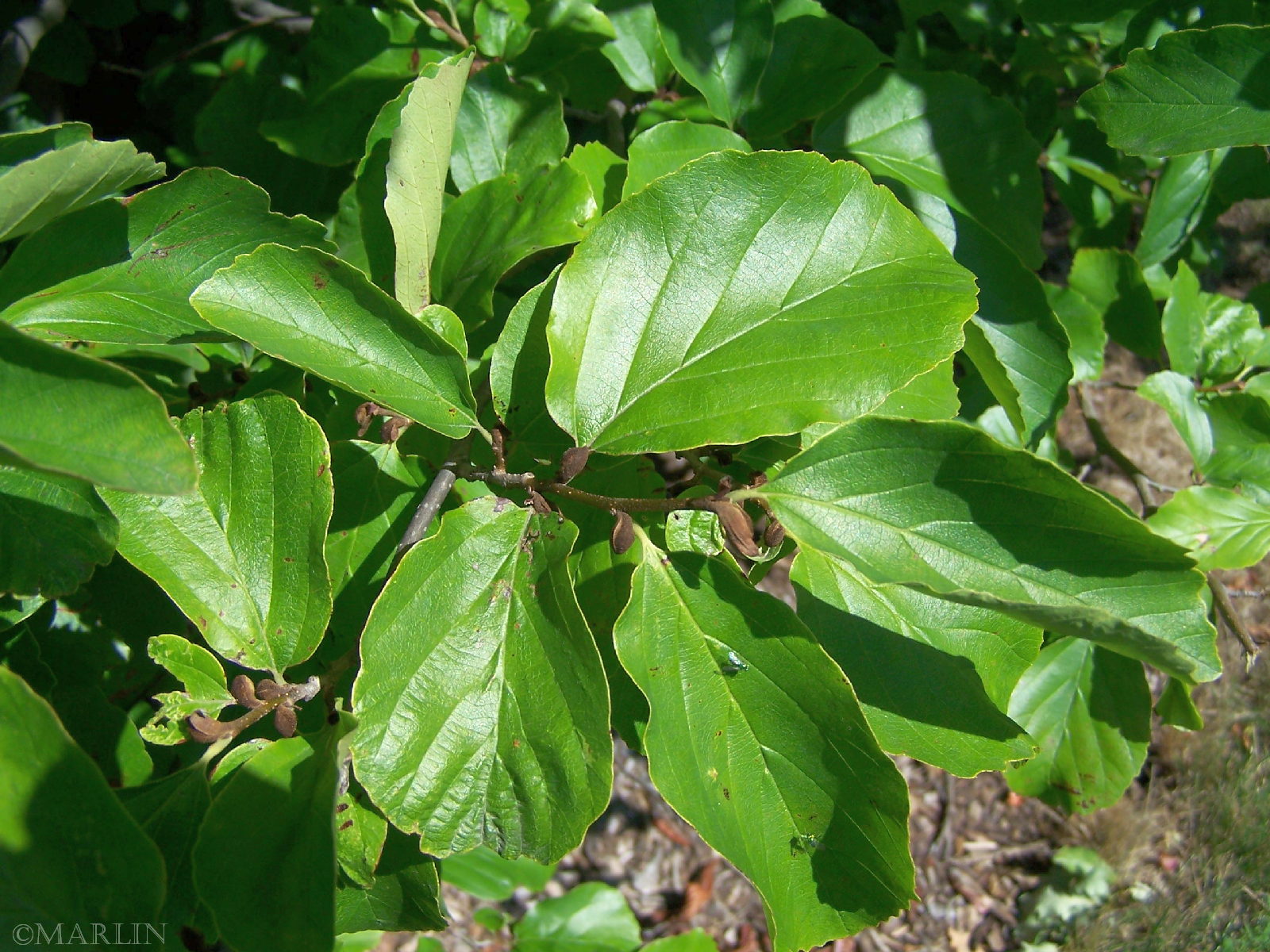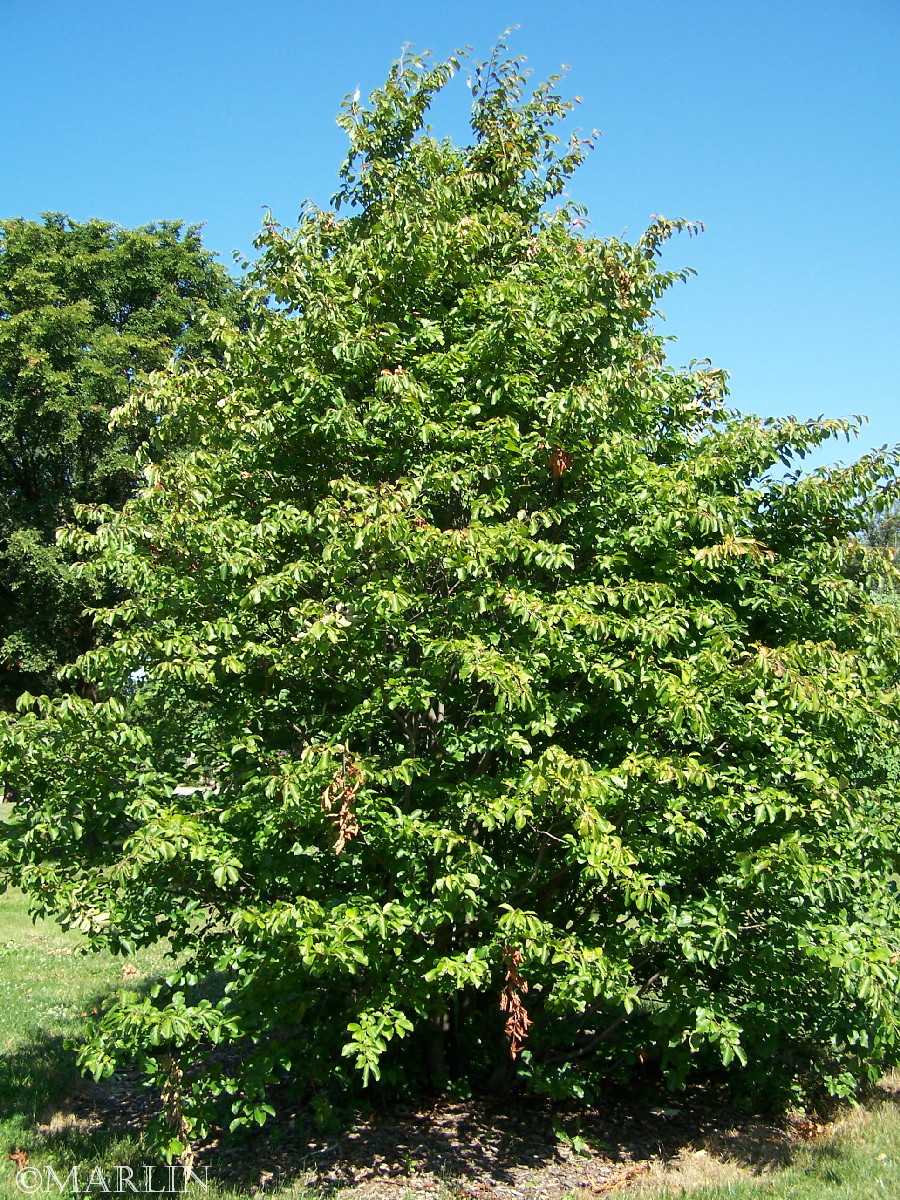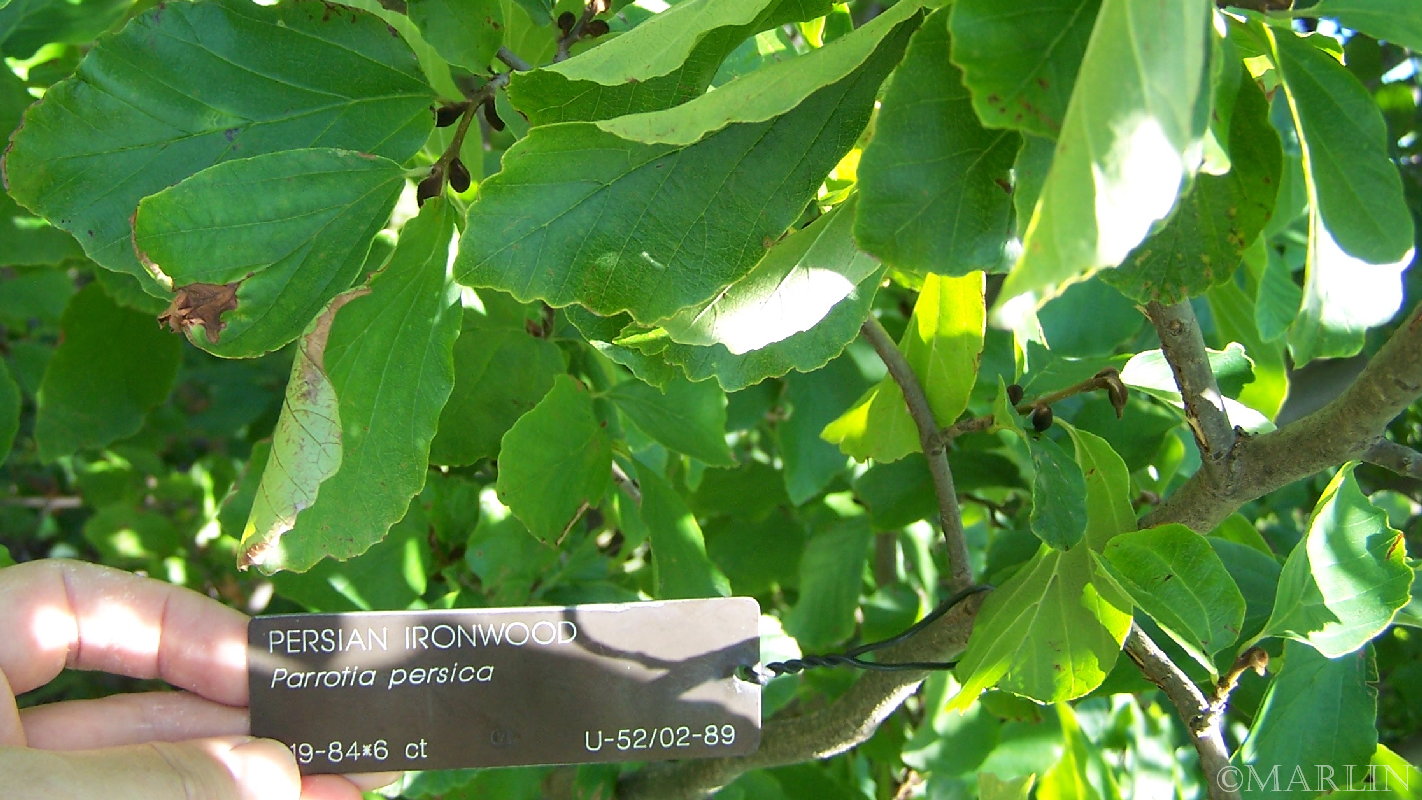Persian Ironwood – Parrotia persica
Family Hamamelidaceae: Witch Hazel, Sweet gum, Ironwood
The genus Parrotia includes only this one species. Other members of the family Hamamelidaceae commonly found in cultivation include witch hazel, sweet gum (Liquidambar styraciflua), witch-alder (Fothergilla major) and loropetalum (Loropetalum chinense). This specimen was photographed at The Morton Arboretum at Lisle, Illinois, USA.
Persian ironwood is a small deciduous tree that grows to 30 ft. Grown for its distinctive spreading habit, its brilliant autumn foliage display, its showy exfoliating bark and its curious late winter ruby red flowers, specimens usually have a single, relatively short trunk which forks near the ground, and a rounded crown composed of wide spreading, horizontal, arching, or even drooping branches. Older specimens develop a crossing and overlapping pattern of branches and may have crown spreads greater than their heights. In this, it resembles some Alders, close relatives.
Grown from a planting, this Persian Ironwood is approximately 24 years old
Persian ironwood is tolerant of drought. It prefers cool climates and grows best in USDA zones 6 and 7. Propagation: Seeds require pretreatment before they will germinate and germination may take more than a year. It is best planted as sedd directly in a cold frame or outdoor container. Persian ironwood is easy to propagate from cuttings taken in spring or summer.
References:
1. eFloras.org, Flora of North America,”Hamalidaceae”
2. eFloras.org, Flora of North America, “Liquidambar Linnaeus, Sp. Pl. 2: 999. 1753”
Family Hamamelidaceae: Witch Hazel, Sweet gum, Ironwood
Trees Index | Pine Family | Beech, Oak | Nut Trees | Birch Family | Magnolias
Tree Encyclopedia / North American Insects & Spiders is dedicated to providing family-friendly educational
resources for our friends around the world through large images and macro photographs of flora and fauna.




